Apple Unveils $699 iPhone 11 with Dual-Lens Camera, Night Mode and More

Toggle Dark Mode
Apple began the iPhone portion of today’s event by announcing the successor to last year’s iPhone XR, while also adopting a name that will make it much more clear that this is the new standard iPhone model.
While the “XR” designation led some to believe that last year’s lower-priced iPhone was somehow a step down from the main lineup, that really wasn’t the case, and Apple is now making that clear by differentiating the premium, flagship models with a “Pro” designation, while making the XR successor the “normal” iPhone 11.
As Apple noted earlier in the presentation, not long after it was released last year, the iPhone XR quickly became the most popular and best-selling iPhone in the world, with 99 percent customer satisfaction, so it’s no surprise that it’s now taking the main place in Apple’s iPhone lineup.

Dual-Lens Camera
The iPhone 11 gains some of the capabilities found in the iPhone XS last year, while preserving the same 6.1-inch screen design. A dual-lens camera system has been added, but Apple has surprisingly changed it up from the dual-lens system found on prior iPhones. From the iPhone 7 Plus all the way through to the iPhone XS, Apple chose to go with a standard wide-angle lens accompanied by a 2X “telephoto” lens, however with the iPhone 11, Apple has gone in the other direction instead.
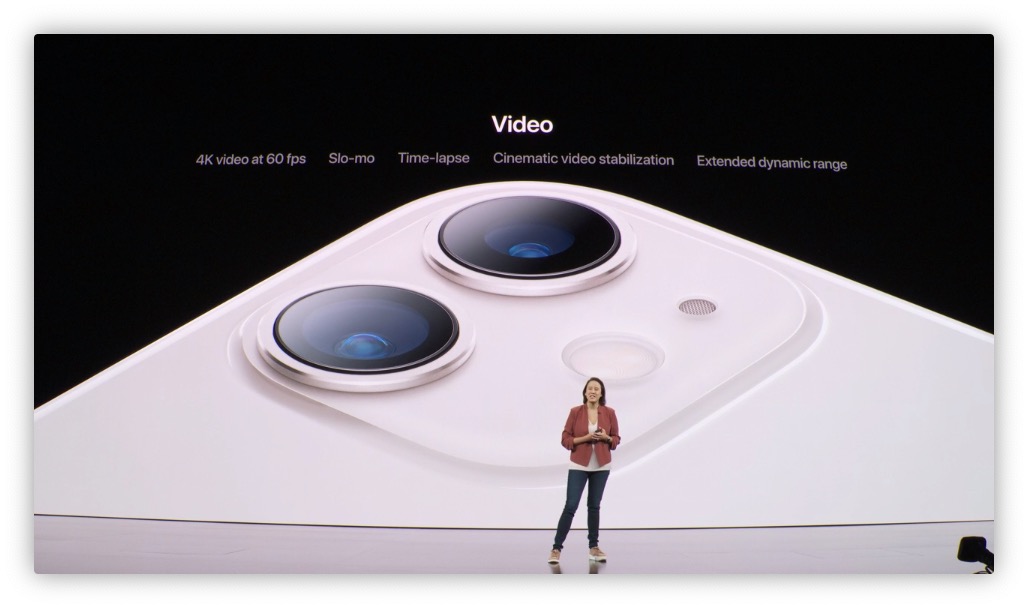
The main camera remains a 12 megapixel wide angle lens at at 26mm equivalent with an f/1.8 aperture, a six-element sensor, and optical image stabilization. However, rather than being used for getting closer shots, the second lens is now an ultra-wide 13mm equivalent — essentially a “0.5x” zoom mode — with a 120-degree field of view to allow users to capture even wider shots. Apple notes that this will be especially useful in situations where you just can’t back up any further to get everything into a photo. The ultra-wide camera is also 12 megapixels, but only sports an f/2.4 aperture and a five-element sensor.
Thanks to the dual camera system, however, Apple will no longer need to play the same kind of machine learning tricks that it did on the iPhone XR for Portrait Mode. Two cameras means that there will be enough data to take Portrait Mode photos of pets and other objects, for example, rather than just people.
Apple has also added another new Portrait Lighting effect in the form of a high-key mono that provides studio-quality black and white photos, and the image signal processor and Neural Engine have been upgraded to add semantic rendering, which will allow subjects to be detected more intelligently for Portrait Lighting, along with improved Smart HDR that features multi-scale tone mapping for improved highlights and shadows.
Night Mode
Apple’s iPhone cameras have always been great at low-light photography, although there’s a limit to how much can traditionally be done in that area. This year, however, the iPhone 11 gains a special “Night Mode” that will allow for pictures to be taken in extremely low light.
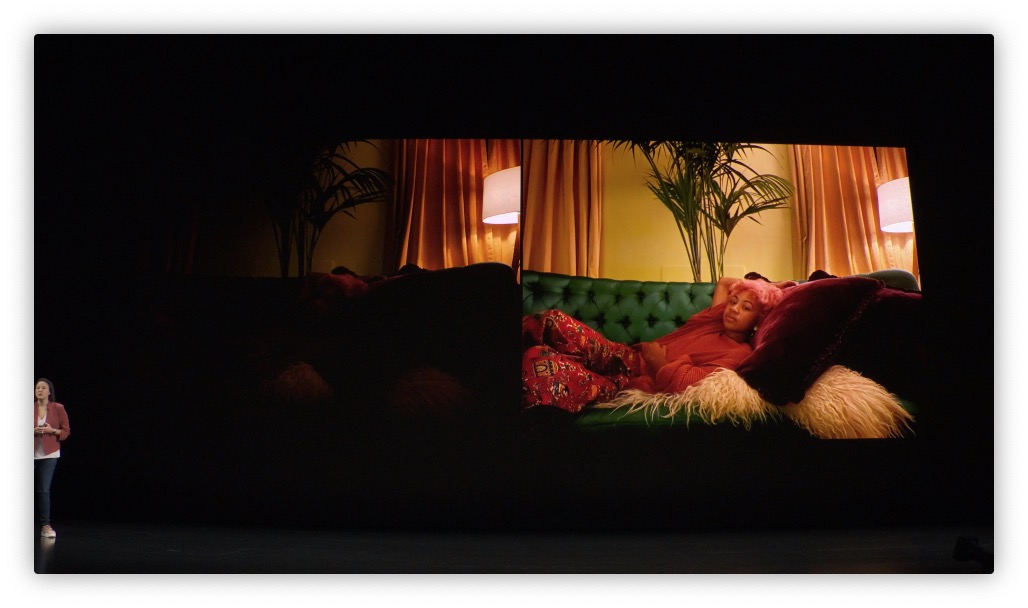
The Night Mode feature comes on automatically when it’s dark enough and will brighten photos without the need to use a flash. As with most of Apple’s other modern photography features, this uses computational machine learning photography to capture multiple images with “adaptive bracketing” and then intelligently fuse them together. The result is photos taken in near-zero light that look like they were shot in a brightly lit room.
Video
Both of the cameras also support Extended Dynamic Range video capture at 4K and 60fps, and Apple has also added a new QuickTake feature, which will allow users to tap and hold the shutter button to record a quick video while taking photos, without having to switch over into video mode. Although it’s unclear why this would require the new iPhone 11 hardware, as opposed to simply being an iOS 13 feature, the presentation suggests that it will be exclusive to the 2019 iPhones.
TrueDepth Camera
Apple has also updated the front TrueDepth camera to allow for higher-resolution photo capture — up to 12 megapixels in landscape mode, while portrait mode selfies will still be shot at the same 7 megapixel resolution as on prior models.
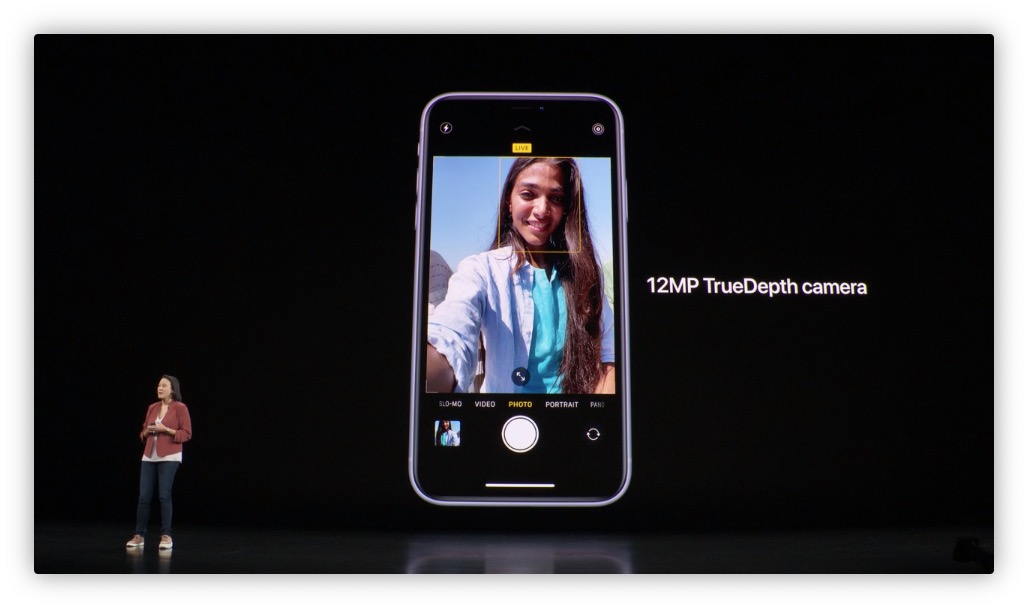
However, the iPhone 11 also adds 4K video recording with extended dynamic range at up to 30 fps on the front camera (up to 60 fps without XDR), and for the first time, users will also be able to record slow-motion selfie videos as well. Apple also briefly mentioned that Face ID performance has been improved as well, although it didn’t elaborate on that point.
Screen and Audio
Apple didn’t say much about the screen on the new iPhone 11, other than mentioning that it’s still a “Liquid Retina” LCD display, with a P3 wide colour gamut and True Tone. By all accounts, this suggests that the display hasn’t seen any significant upgrades from last year’s iPhone XR. Despite rumours that Apple might go all-in on OLED this year, it seems that the company wanted to get at least one more year out of its specially-designed LCD screen.
In terms of audio, however, the iPhone 11 gets a boost over the prior XR with Dolby Atmos sound and new spatial audio for what Apple calls an “immersive, theatre-like experience.”
U1 Chip and Ultra Wideband
Although Apple didn’t make any specific mention of it during the keynote, the summary features slide shown during the presentation indicated that the iPhone 11 will also feature a new Apple-designed U1 chip. This appears to be the final name of the R1 chip reported yesterday, and will work with new ultra wideband radios for more precise positioning — laying the groundwork for indoor navigation features as well as Apple’s new Tile-like tags, which clearly weren’t ready for Apple to announce yet, although we’re sure they’re still coming at some point.
The new Apple?designed U1 chip uses Ultra Wideband technology for spatial awareness — allowing iPhone 11 to precisely locate other U1?equipped Apple devices. Think GPS at the scale of your living room. So if you want to share a file with someone using AirDrop, just point your iPhone at theirs and they’ll be first on the list.
For now, however, Apple is promoting this primarily as a feature to allow you to do things like share files using AirDrop more effectively, since your iPhone 11 will be able to more accurately identify where other nearby iPhones are located. Notably, however, the new iPhone models don’t appear to be getting an upgrade to Bluetooth 5.1, which would allow for directional positioning of non-UWB devices, so it seems like this capability will only work between two iPhone 11’s.
Performance and Battery Life
As expected, Apple’s new iPhone 11 will include the A13 Bionic, the next-generation of last year’s A12 chip. The A12 already led the pack against competing smartphones, and with the A13 Apple is once again boasting the fastest chip ever found in a smartphone, both in terms of raw processing and GPU performance.
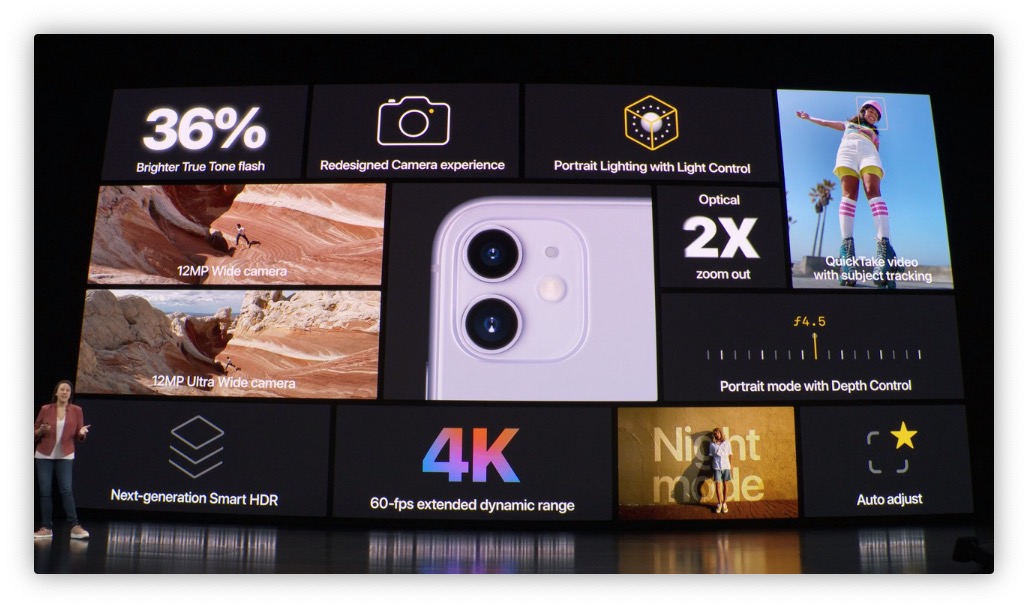
The iPhone XR also surprised everybody last year by delivering the longest battery life ever seen in an iPhone. In fact, for many users, this was enough to justify the purchase of an iPhone XR by itself. This year, Apple is promising that the iPhone 11 will beat last year’s iPhone XR with an hour of additional battery life.
Design
Not surprisingly, this year’s iPhone 11 isn’t a big departure from the iPhone XR design, and if it weren’t for the cameras you’d probably be hard-pressed to tell them apart. Apple has moved the Apple logo down to the centre of the rear casing — a move which some speculated to be used as a wireless charging target, although there’s no indication that the new iPhones support reverse wireless charging — and eliminated all of the text from the rear of the iPhone, but for those who slap their iPhones in a case anyway, it’s not going to be readily apparent.

The dual-lens camera notably features a square camera bump, like Apple’s triple-lens iPhone 11 Pro models, with the LED flash moved over to one side of the lenses. Apple also notes that the camera lenses are coated with precision-sculpted 3D glass.
The iPhone 11 is made of the same anodized aluminum and glass as the iPhone XR, although Apple claims the glass is now the toughest ever, so there have likely been some improvements to the design in that area. Apple has also added a new purple color to the lineup that also includes white, yellow, green, black, and Product(RED) versions.
Models, Pricing, and Availability
This year, Apple oddly didn’t mention during the keynote what capacities the new iPhone would be available in, simply stating that it will be starting at $699, which turns out to be the price for the 64 GB model. As with the iPhone XR, there will also be a 128 GB version available for $749, and a 256 GB model for $849. Pre-orders will open this Friday, although Apple is delaying them until 5 a.m. PT this year, presumably to avoid the midnight rush, and the new iPhone 11 is expected to begin shipping — and arrive in stores — on September 20th.
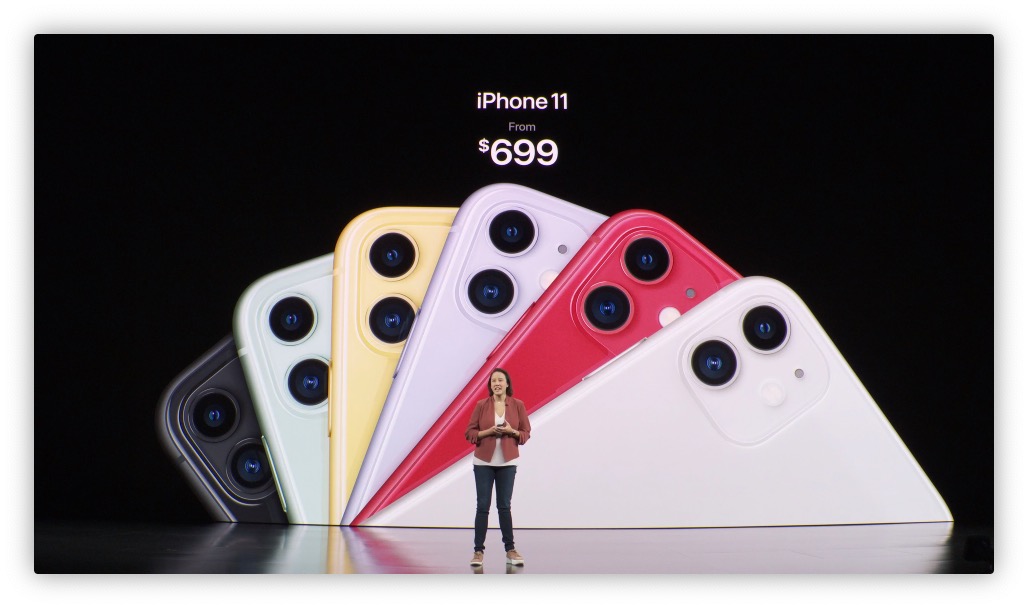
Notably, Apple is also keeping last year’s iPhone XR in the lineup, now priced at $599 for the base 64 GB model or $649 for the 128 GB version. The iPhone 8 also remains, starting at $449, for those who still prefer Touch ID to Face ID.






